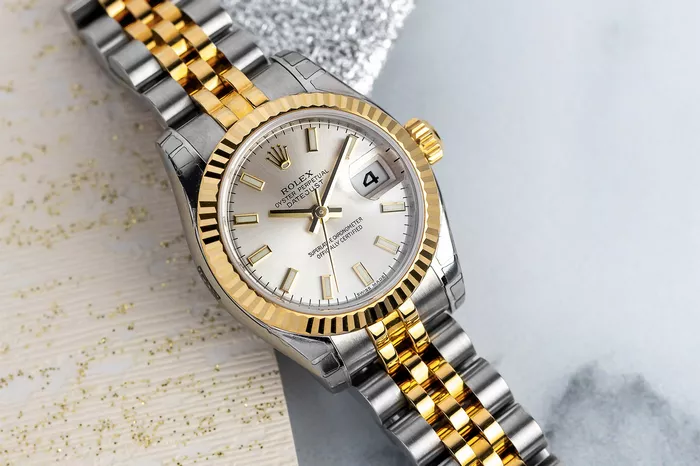For luxury watch enthusiasts, the market is evolving. While iconic brands like Rolex, Audemars Piguet, and Patek Philippe have long dominated the conversation, an increasing number of alternative watchmakers are gaining traction in the secondary market. These lesser-known brands are catching the attention of collectors who are seeking unique designs, innovative features, and investment potential—often at more accessible price points.
The Secondary Market: A Thriving Ecosystem for Emerging Brands
In recent years, the secondary watch market has seen significant growth, driven by collectors looking for discontinued models, limited-edition releases, and rare finds. While the big names in haute horlogerie—Rolex, Patek Philippe, and Audemars Piguet—will always be staples of the luxury watch industry, the rise of alternative brands has sparked a shift in focus. For those willing to look beyond the well-known heavyweights, the secondary market offers a wealth of exciting opportunities.
The process of acquiring a luxury watch often involves navigating long waiting lists at authorized retailers. For the most coveted models, such as the Rolex Submariner or the Patek Philippe Nautilus, buyers may face waiting periods of 12 to 18 months—or longer. The secondary market, however, provides an avenue to bypass the wait, often allowing collectors to access hard-to-find pieces that have been discontinued or are no longer in production. Over the past five years, a number of smaller brands have capitalized on this demand, emerging as strong contenders in the luxury watch space.
The Brands on the Rise
Hermès: A Timeless Fusion of Style and Craftsmanship
Once known exclusively for its luxury handbags, Hermès has made a significant splash in the world of watchmaking. The French brand’s transition into horology has been nothing short of spectacular, with recent releases like the H08, Cape Cod, and Arceau capturing the attention of watch collectors. Hermès’ unique approach to design, blending avant-garde aesthetics with traditional craftsmanship, has helped it carve out a niche in the secondary market. With the highest year-on-year market share growth on platforms like Chrono24, Hermès is now a force to be reckoned with in the watchmaking world.
Hermès has been producing timepieces since the 1920s, but it wasn’t until the 2000s, with the introduction of in-house movements, that the brand truly began to make waves in the watch industry. Its designs continue to stand out for their timeless elegance and distinctive character, making them highly sought-after in the resale market.
Piaget: Elegance Meets Innovation
Famous for its ultra-thin movements and refined designs, Piaget is another brand that has seen remarkable growth in the secondary market. Known for pieces like the Altiplano and Polo S collections, Piaget combines sleek elegance with robust craftsmanship, making it a top choice for collectors seeking both style and performance. Piaget’s recent triumphs at prestigious events like the Watches & Wonders show and the Le Grand Prix d’Horlogerie de Genève have cemented its position as a rising star in haute horlogerie.
Piaget’s market presence has been buoyed by celebrity endorsements, including Hollywood’s Adam Driver sporting the brand’s timepieces on the red carpet. With celebrated complications like the Piaget Altiplano Concept Tourbillon, Piaget is attracting buyers who appreciate both its history and cutting-edge innovations.
Doxa: The Dive Watch With a Legacy
Doxa, a Swiss brand established in 1889, is experiencing a resurgence thanks to its iconic dive watches. Best known for its cushion-shaped cases and bold, bright-orange dials, Doxa has long been a favourite among professional divers. The brand’s Sub 300 model, developed in collaboration with legendary diver Jacques Cousteau, helped define the modern dive watch.
Today, Doxa continues to produce high-performance timepieces, offering remarkable water resistance—up to 1,200 meters in some models. These watches are not just functional; they also stand out for their distinctive design and durability, making them highly desirable in the secondary market.
Universal Genève: A Vintage Favourite
Once a major player in the watchmaking industry, Universal Genève is enjoying a revival among collectors of vintage timepieces. The brand’s reputation for intricate designs and its pioneering Microtor movement—an ultra-thin movement with the winding rotor housed within the movement itself—has helped it maintain a loyal following. Universal Genève’s Polerouter collection, originally launched in 1954, has become synonymous with historical chronographs and remains a highly sought-after vintage piece.
Recently, the brand has reintroduced the Polerouter in celebration of its 70th anniversary, further cementing its status as a key player in the world of classic horology.
The Changing Landscape of Luxury Watches
While traditional luxury watch brands like Rolex and Patek Philippe will always have a place in the world of high-end timepieces, the rise of brands like Hermès, Piaget, Doxa, and Universal Genève signals a shift in the watch market. These lesser-known names offer unique designs, innovative complications, and rich histories that resonate deeply with collectors looking for something distinct.
As the secondary market continues to grow and evolve, the conversation around luxury watches is expanding. Collectors are no longer confined to the traditional heavyweights; they are exploring a wider range of brands that offer exciting, exclusive pieces. Whether it’s the avant-garde design of Hermès, the technical mastery of Piaget, the dive expertise of Doxa, or the vintage appeal of Universal Genève, there has never been a better time to consider alternatives to the industry giants.
For those looking to make a statement with their timepiece, the emerging watch brands offer an intriguing opportunity to stand out while still indulging in the world of luxury watchmaking.
Related Topics:
How To Choose Cartier Men’s Watches

